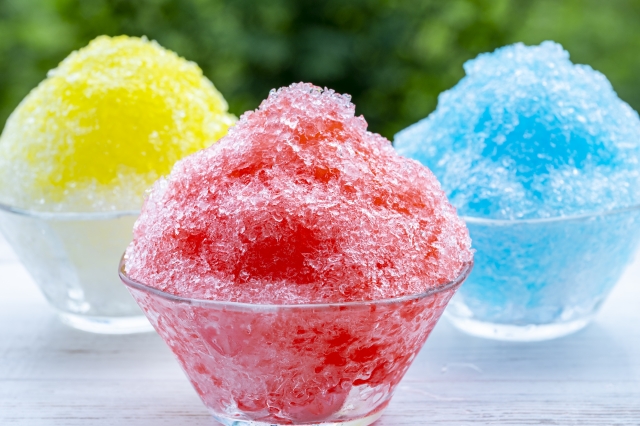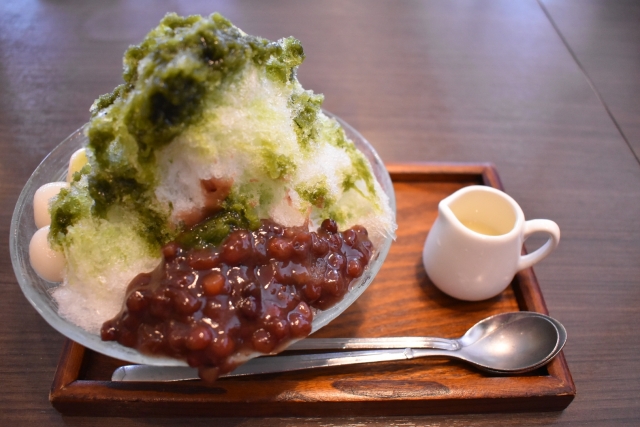One of the things I have only discovered upon moving to Japan (and which I now believe is sorely missing from European summers) is shaved ice. Extremely refreshing and practically calorie-free, this light dessert is a beloved summer staple for kids and adults alike.

Apparently, the Japanese version of shaved iced, called kakigori, is especially fluffy, and indeed, the consistency reminds me of freshly fallen snow. (Yes, I do know how snow tastes, the best efforts of my grandparents to prevent that notwithstanding…)
Eating shaved ice dates back to the Heian period, when it was an expensive delicacy for aristocrats. It became widely popular (and available) in the 19th century, and today, July 25 is even considered Kakigori Day in Japan.
Traditionally, kakigori was produced by shaving a block of ice using a hand-cranked machine, and some food stalls at local festivals still have one of these (on display, if not in use).

The freshly shaved ice is put in a bowl or cup and sweet syrup is added for flavour. Lemon, strawberry, melon, ramune (a popular old-fashioned type of soda) and many other flavours are available.
A special green tea version with azuki beans and mochi, called ujikintoki, is said to have been invented in Uji city. There is also yakigori where liquor is poured over the ice and then set aflame, but somehow I feel that this goes against the purpose.

As I said, kakigori is ubiquitous in Japanese summer; it is sold everywhere the little flag with the kanji for ice is displayed, from restaurants and cafes to convenience stores all the way to yatai food stalls at festivals.
A personal favourite and the absolute winner when it comes to taste is the kakigori with condensed milk and strawberry jam served in the Saruya tea house at Shimogamo Shrine. And this year, coincidentally, I had one bowl of it right on Kakigori Day!
